
- What is Functional Testing?
- Why Functional Testing is required?
- What are the different types of Functional Testing?
- How to perform Functional Testing?
- Best practices for taking up Functional Testing
- What are the different Functional Testing techniques?
- Functional Testing vs. Non-Functional Testing
- Some of the important Functional Testing tools
- Conclusion
What is Functional Testing?

Functional testing is a form of testing and is a quality assurance process that helps to validate the system or components against various functional specifications and requirements outlined. Functional testing is a type of black-box testing as the source code of the application is not considered during the testing process.
The main purpose of this form of software testing is to test each functionality of the application by providing certain inputs and validating the outputs against the functional requirements.
In simpler words, this form of testing verifies whether the software performs in a way the users expect. As this type of testing is completely based on program specifications, it is also known as specifications-based testing. In this testing process, QA engineers focus on validating the system against the functional specifications and verifies the features against specified set of user specifications.
Why Functional Testing is required?

The need for functional testing is vital in validating the quality and functionality of the software. Through this software testing technique, quality assurance teams verify the software functionality based on the Software Requirements Specification (SRS) and ensures the system functions as per the user specifications.
This form of testing helps to check if the system is fixed for release and is error-free. This testing does not depend on any assumptions about the structure of the system, however, it ensures to deliver high-quality product. Basically, this testing method is used to test usability features, specific error conditions, checks accessibility features along with testing other important functions of the software.
What are the different types of Functional Testing?
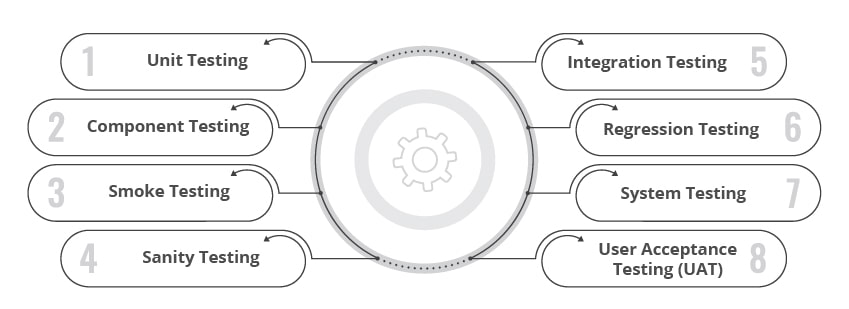
Unit Testing:

Unit testing is the first phase of software testing in the software development lifecycle (SDLC). This functional testing type is performed by developers and they write the scripts to validate whether the small units of the application are working as per the requirements or not.
Component Testing:

This functional testing type is much similar to unit testing, but the critical difference is that it is performed by testers and it tests each object of the application separately with or without isolation of other software objects.
Smoke Testing:

Smoke testing is performed after each build is released. This functional testing type is also known as build verification testing. This process helps to test whether all the test environment aspects are running successfully and whether the build is stable or not and justifies if the build can be used for further testing process.
Sanity Testing:

Sanity testing is usually performed after smoke testing, i.e. after receiving a software build with minor changes made. In simpler words, it is used to validate the code changes introduced continue to work as expected.
Integration Testing:

Integration Testing is one of the important software testing method where individual modules of the application are combined and tested as a group to identify the functionality after combining different modules.
Regression Testing:
This functional software testing method helps in ensuring the new changes made to the code are not affecting the already existing features or functionalities of the application.
System Testing:

This is also a functional testing method that is performed after integration testing. This system testing phase is used for validating the fully integrated software application.
User Acceptance Testing (UAT):
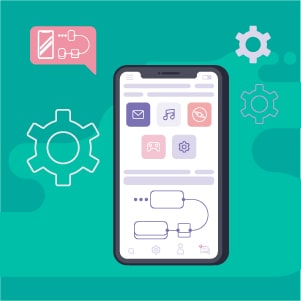
This is the final software testing phase, wherein end-users or clients take up the roles of test engineers to validate whether the developed application is meeting the requirements or not. UAT is an important functional testing type that is performed before moving the application for production.
How to perform Functional Testing?
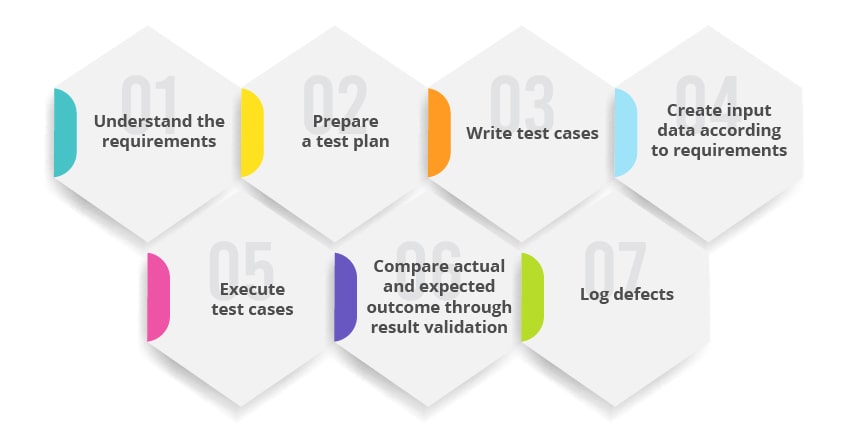
Understand the requirements:
Before moving ahead for the functional testing process, the initial step is to have a thorough understanding of the business requirements. This is one of the very important steps to make further steps successful.
Prepare a test plan:
For successful functional testing, a good test plan is very important. Test engineers have to work on the test objectives so that it becomes easier to schedule and organize the test activities.
Write test cases:
Another important step after analysing the requirements and having a test plan is the creation of functional test cases. Here, three important aspects have to be worked upon which includes test data, test input, and test output.
Create input data according to requirements:
To test specific functionality, testers should create data and use it as an input to test the functionality of the application. This type of data is known as input data and this data which is used to test the applications is known as test input data.
Execute test cases:
The next step is executing the test cases by using the test input data identified during the creation of test cases.
Compare actual and expected outcome through result validation:
This is the major step where the actual test output is verified against the expected test result to mark pass or fail of the tests.
Log defects:
When comparing both actual and expected outputs, the variation of the difference identified between them is noted as log defects. Testers log defects to notify the development teams so that the defects get fixed at the earliest.
Best practices for taking up Functional Testing
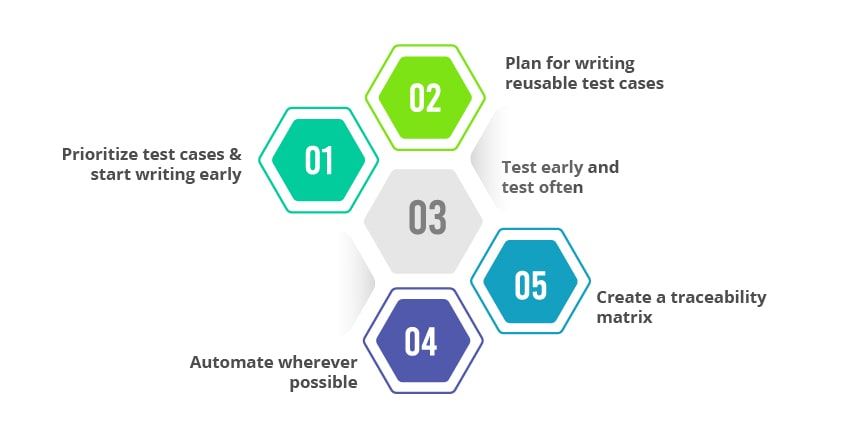
1. Prioritize test cases & start writing early:
It is preferred to prioritize the test cases based on the complexity-levels and start writing test cases early in the requirements analysis and design phases to better achieve functional testing objectives.
2. Plan for writing reusable test cases:
Test cases needs a lot of time and skills to work on them. Thus, it is preferable to have reusable test cases to save time. And, to write reusable test cases, it is essential to write them in simple language and ensure they are short and easy to execute.
3. Test early and test often:
It is essential to test early during the software development phase to know the bugs and issues and as features keep changing functional regression testing should be taken up to ensure existing functionalities remain unaffected with the new changes
4. Automate wherever possible:
Test automation is helpful to avoid repeated manual tasks and helps to automate processes to save time and cost. But, it is not possible to automate all test cases and hence it is essential for testers to decide which of the test cases should be automated.
5. Create a traceability matrix:
It is essential to create a traceability matrix to capture all requirements given by the client and it maps the user requirements with the test cases. It is helpful to ensure that all functionalities are covered while performing software testing.
What are the different Functional Testing techniques?
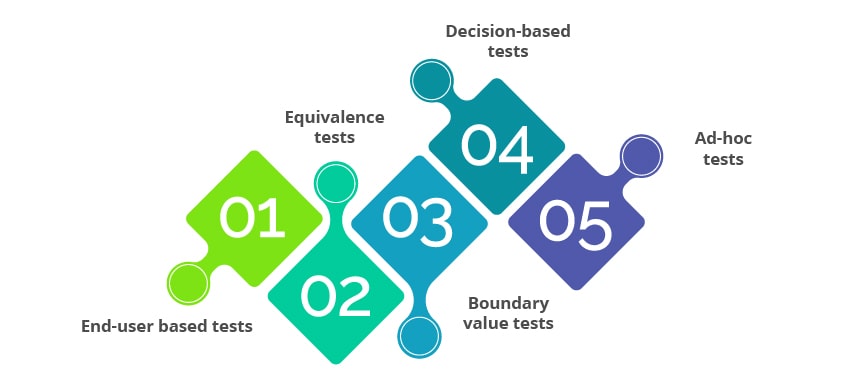
End-user based tests:
In this functional testing technique, the system is tested to validate all the components work perfectly in combination or not.
Equivalence tests:
In this equivalence test technique, the test data is divided into various partitions and the data in each of the partitions has to respond in a similar way. Thus, tests are performed on one condition; if any one of the conditions fails in any partition, then the others stop working.
Boundary value tests:
This technique helps in validating how the system performs when boundary data limits are implemented. Typically, if the provided inputs are less than the boundary values, then the test is considered as negative testing.
Decision-based tests:
This decision-based test technique helps in verifying the possible outcomes that can be achieved when a particular condition is satisfied.
Ad-hoc tests:
This testing technique helps in identifying the bugs that were not identified in any other tests. Ad-hoc testing works as a smart way to discover the bugs that are not identified earlier.
Functional Testing vs. Non-Functional Testing
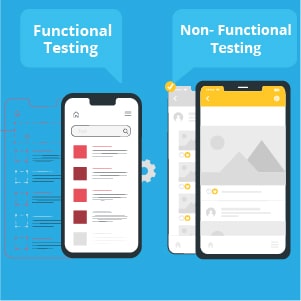
| It checks the actions and operations of the applications. | It checks the application’s behavior. |
| Functional testing is performed according to the business requirements. | This form of testing is performed according to customer expectations based on the required app performance. |
| Functional testing helps in testing the software functionality. | Non-functional testing helps in validating the performance parameters and scalability of the system. |
| Functional test cases can be easily executed with manual testing methods. | Non-functional testing is tough to do with manual testing. |
| Examples of Functional testing types are: • User acceptance testing • Unit testing • Regression testing • Smoke testing |
Examples of Non-functional testing types are: • Volume testing • Usability testing • Performance testing • Security testing |
Some of the important Functional Testing tools
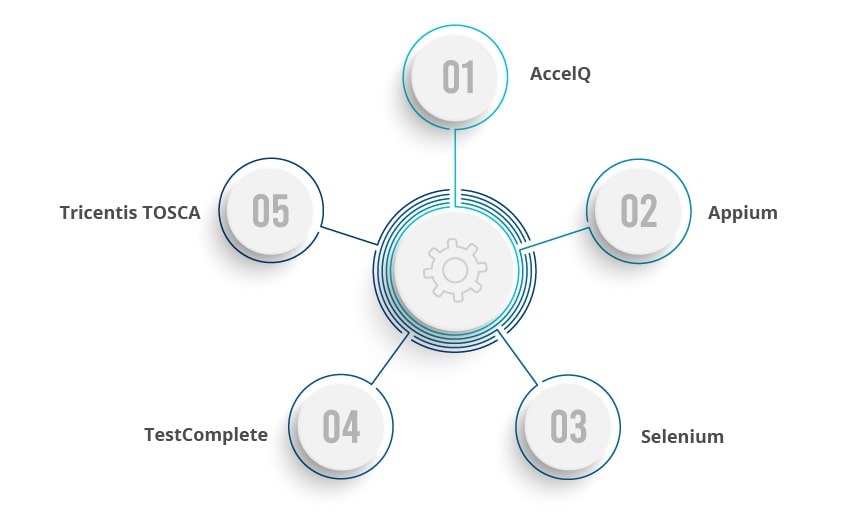
1. AccelQ:
This is one of the popular automation tools designed for testing APIs. This tool allows an effective integration process between functional testing and API testing.
2. Appium:
This is an open-source functional testing tool commonly used for performing functional testing for Android and iOS mobile apps. This tool supports multiple programming language such as Java, Python, Ruby, PHP, etc.
3. Selenium:

Selenium is one of the popular open-source automation testing frameworks used testing web applications. Selenium tool supports a number of operating systems, environments and browsers. It provides a playback tool for authoring functional tests and runs on Windows, Linux, Mac, etc.
4. Tricentis TOSCA:

With this tool, it is easier to perform end-to-end functional testing. This tool helps to automate all the layers of modern enterprise architecture and helps in extending the already existing tests by allowing continuous testing within the CI/CD process.
5. TestComplete:
This is one of the widely preferred functional automation tools for desktop, mobile, and web applications. This tool supports a number of languages such as C#, VBScript, C++, etc. and is used to create automated tests across desktop, web, and mobile applications.
Conclusion
Functional testing works as an integral part of a software testing and quality assurance process and helps in validating how well the software functionalities are working based on user requirements. This functional testing method helps in ensuring that the software functions in the conformance with the requirements specifications.
This testing method results in delivering quality software that assures satisfying user experiences. There are many benefits with this testing method and there are various forms of functional testing that are useful when performed while testing software products. Leverage functional testing services from next-gen QA testing service providers to deliver applications that perfectly meets your customer requirements and business objectives.
Discover more
Get in Touch
Stay Updated
Subscribe for more info







